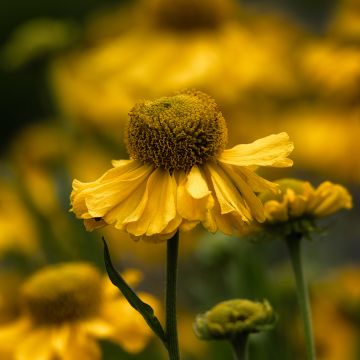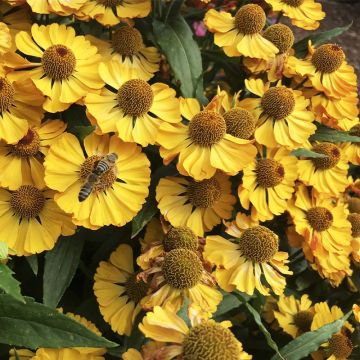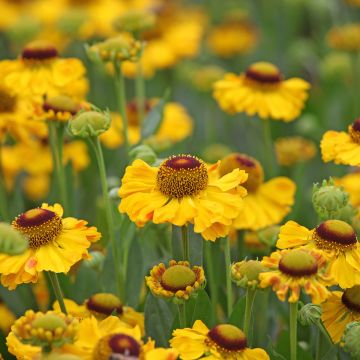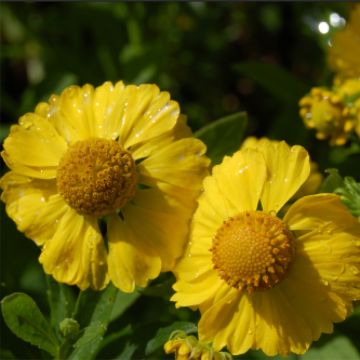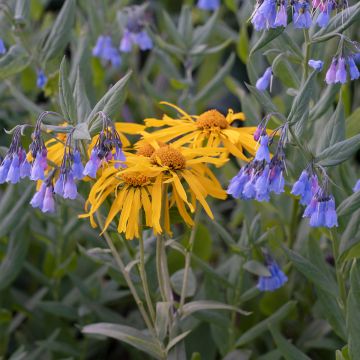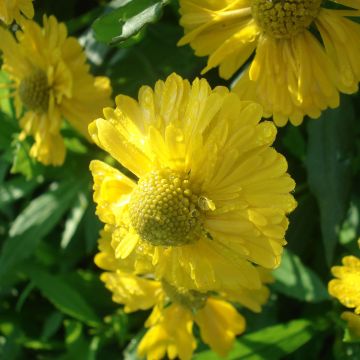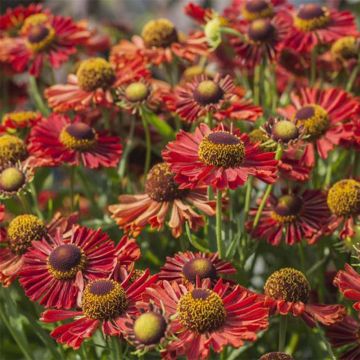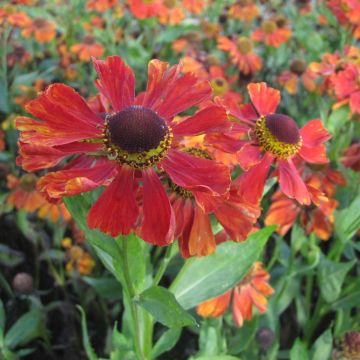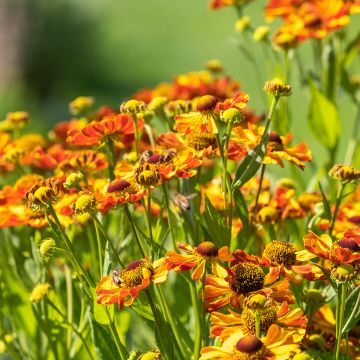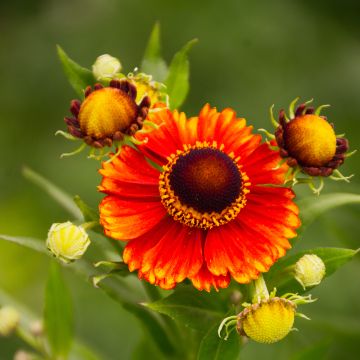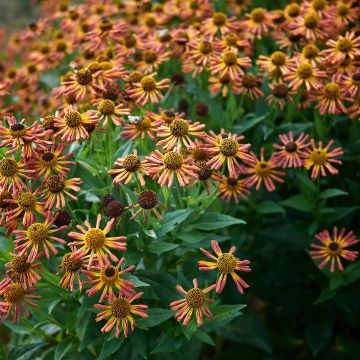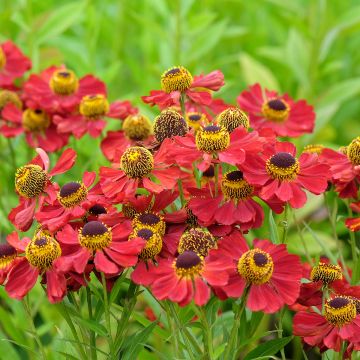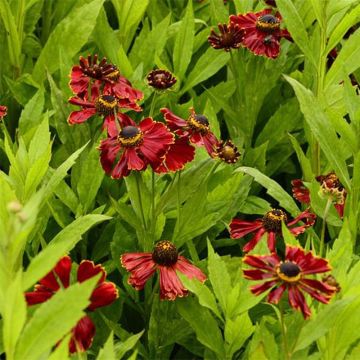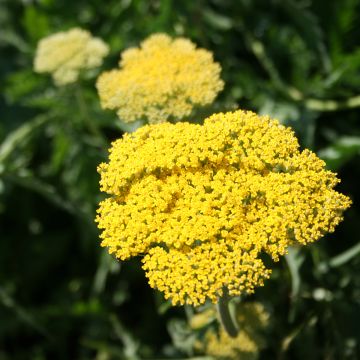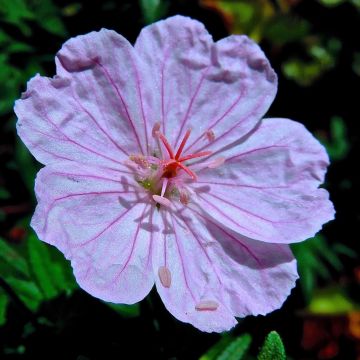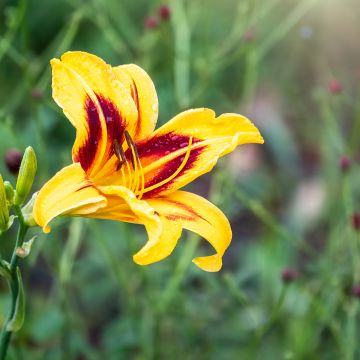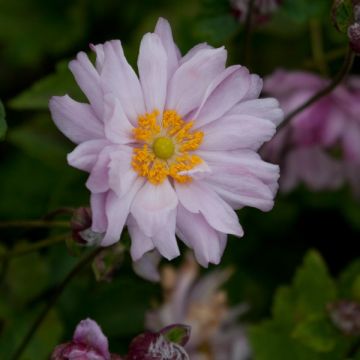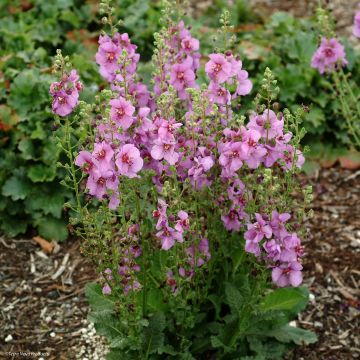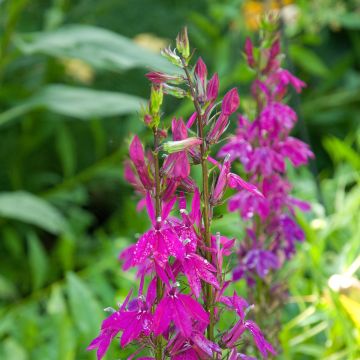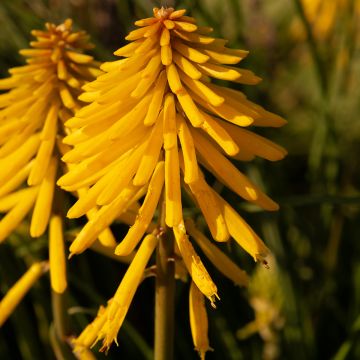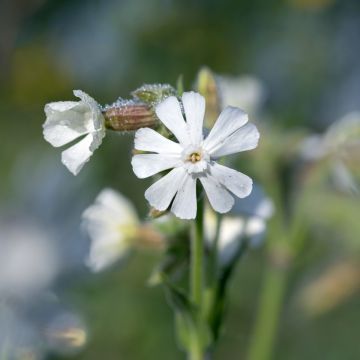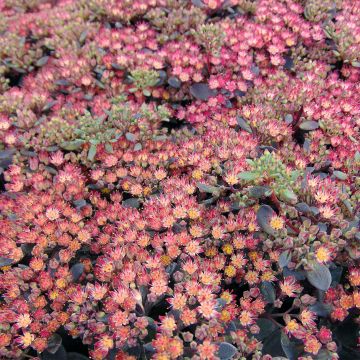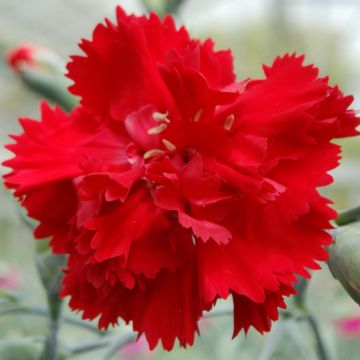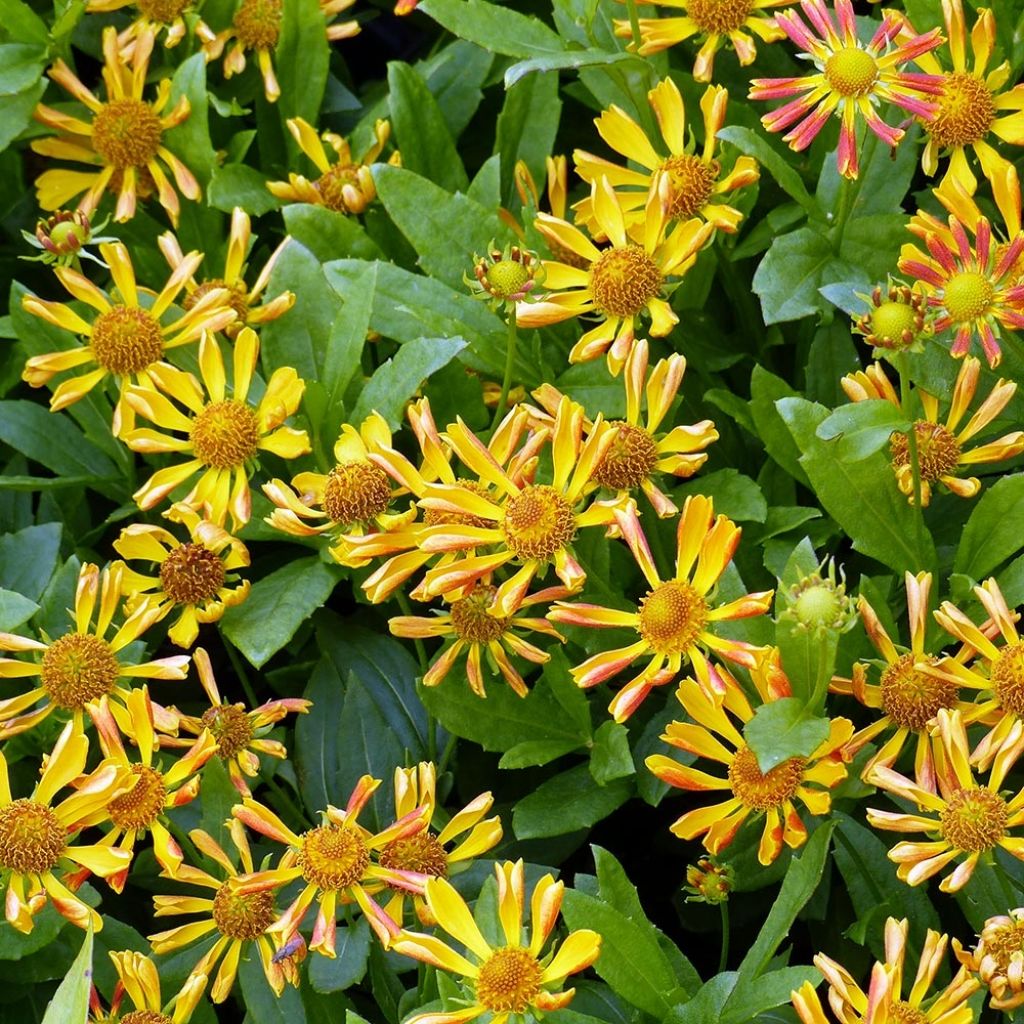

Helenium Fancy Fan
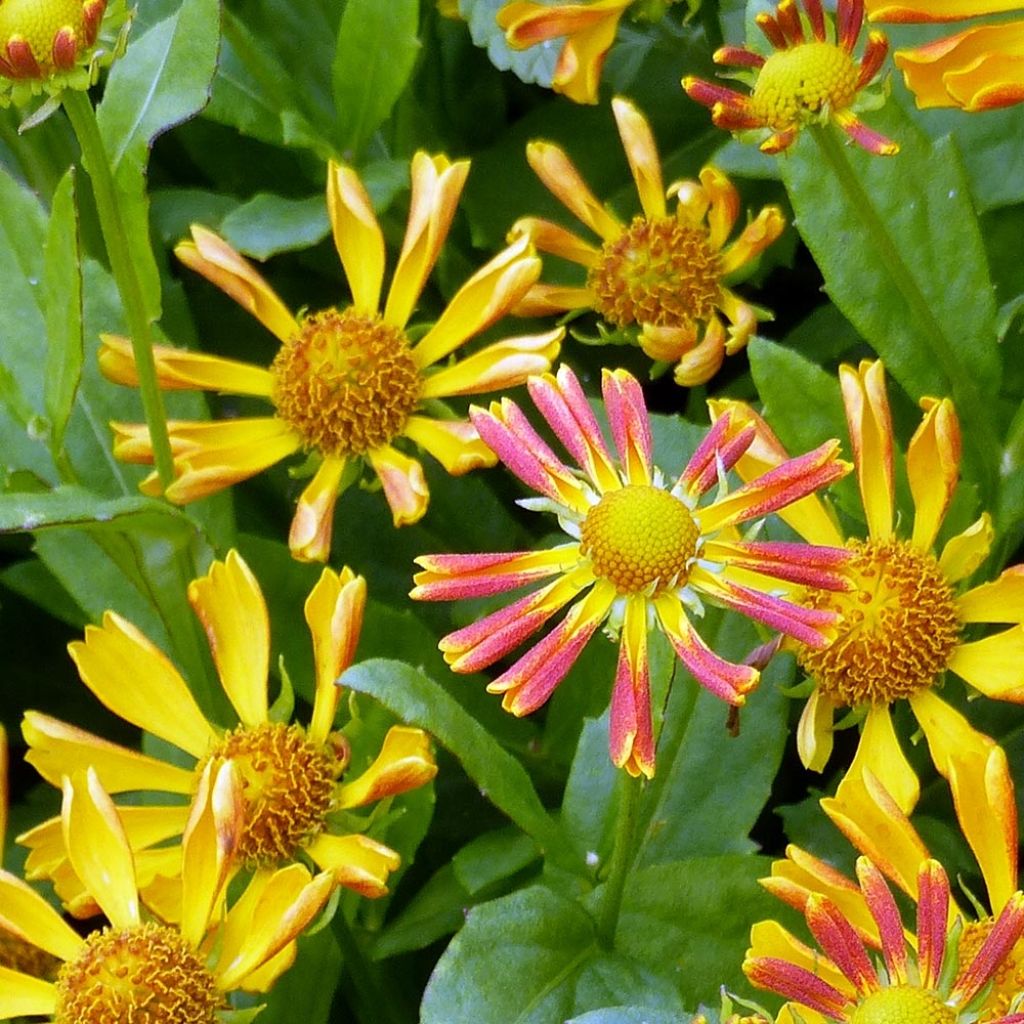

Helenium Fancy Fan
Helenium Fancy Fan
Helenium Fancy Fan
Sneezeweed, Helen's flower, Dogtooth daisy
young plant a bit weak, but I rely on its robustness to fill out my flowerbed.
Régine, 14/11/2022
Why not try an alternative variety in stock?
View all →This plant carries a 12 months recovery warranty
More information
We guarantee the quality of our plants for a full growing cycle, and will replace at our expense any plant that fails to recover under normal climatic and planting conditions.
From €5.90 for pickup delivery and €6.90 for home delivery
Express home delivery from €8.90.
Does this plant fit my garden?
Set up your Plantfit profile →
Description
Helenium 'Fancy Fan' is a recent variety of autumn sunflower, particularly bright, whose original flowering announces the end of summer with fanfare. The very curled yellow petals reveal their orange reverse. The peripheral florets are few in number, spaced apart, arranged in a fan around a large yellow to brown bulging heart. It is in late summer that these inflorescences resembling daisies appear, carried by sturdy stems that emerge from beautiful lanceolate foliage. It is a robust perennial, easy to grow in sunny and moist soil. It is ideal for making bouquets.
Natural varieties of Heleniums are perennials belonging to the Asteraceae family, native to North America; they are generally found around marshes. The 'Fancy Fan' cultivar offers a very bright colour and an unusual inflorescence. The upright habit of the plant is supported by stems reaching up to 1.10m (4ft) in height. The coloured leaves, of a medium green colour, lanceolate in shape and with smooth margins, are arranged alternately along the stems. During the months of July to September, a myriad of flowers appear at the top of the stems. Resembling daisies, the heads are composed of almost tubular outer florets, with a bicolour appearance, around a cone colored in brown gradually giving way to yellow stamens. It is when the sun highlights them that these colours are most astonishing.
The 'Fancy Fan' Helenium is a hardy and never sick plant. It appreciates ordinary soils and sunny exposures. Easy to grow, it blooms well in slopes, flower beds, and large containers. Despite all these qualities, Heleniums remain rare in gardens. Perhaps because their warm tones announce autumn and the end of the beautiful days... This Helenium pairs very well with autumnal plants such as asters, Heucheras, perennial chrysanthemums or Rudbeckias, but it can also be associated with deciduous Euonymus with sublime foliage from the first cold spells. In a more Mediterranean atmosphere, the felted foliage of Stachys or salvias greatly enhance the warm hue of its flowering.
Report an error about the product description
Helenium Fancy Fan in pictures
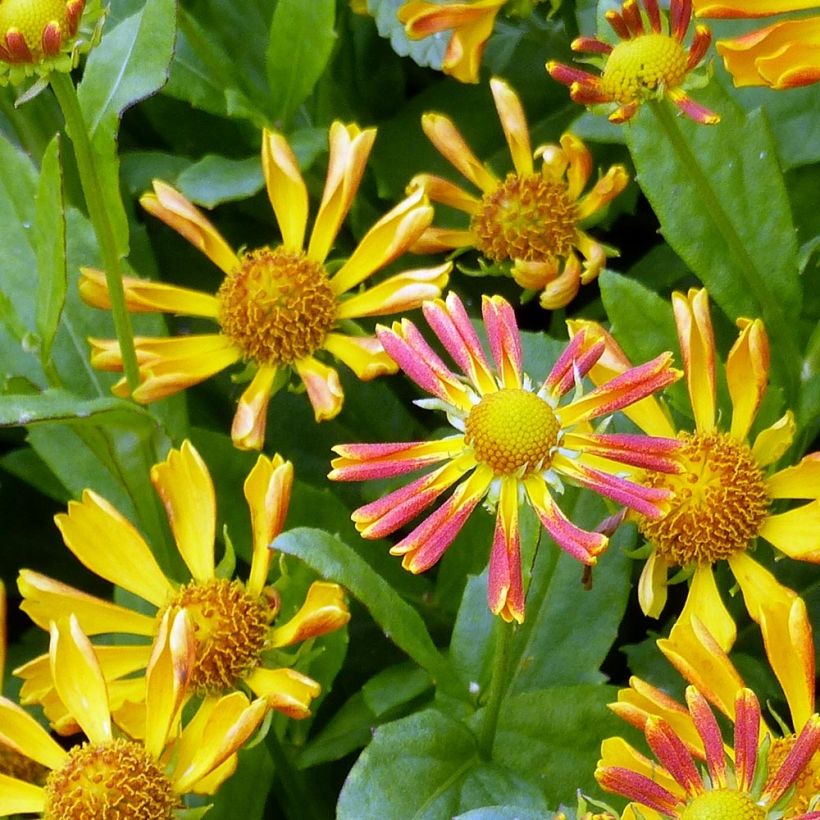

Flowering
Foliage
Plant habit
Botanical data
Helenium
Fancy Fan
Asteraceae
Sneezeweed, Helen's flower, Dogtooth daisy
Cultivar or hybrid
Other Helenium
Planting and care
Plant the 'Fancy Fan' Helenium in ordinary soil as long as it is well-drained, adding planting compost and/or well-rotted compost. Choose a sunny position for it. Water regularly after planting, and once established, only water in case of prolonged drought. This particularly tall variety will benefit from staking. Cut back the plant once the stems have turned black. Every 2 to 3 years, you can divide the clump in spring or autumn to regenerate the plant and give it renewed vigor.
Planting period
Intended location
Care
-
, onOrder confirmed
Reply from on Promesse de fleurs
Summer flowering perennials
Haven't found what you were looking for?
Hardiness is the lowest winter temperature a plant can endure without suffering serious damage or even dying. However, hardiness is affected by location (a sheltered area, such as a patio), protection (winter cover) and soil type (hardiness is improved by well-drained soil).

Photo Sharing Terms & Conditions
In order to encourage gardeners to interact and share their experiences, Promesse de fleurs offers various media enabling content to be uploaded onto its Site - in particular via the ‘Photo sharing’ module.
The User agrees to refrain from:
- Posting any content that is illegal, prejudicial, insulting, racist, inciteful to hatred, revisionist, contrary to public decency, that infringes on privacy or on the privacy rights of third parties, in particular the publicity rights of persons and goods, intellectual property rights, or the right to privacy.
- Submitting content on behalf of a third party;
- Impersonate the identity of a third party and/or publish any personal information about a third party;
In general, the User undertakes to refrain from any unethical behaviour.
All Content (in particular text, comments, files, images, photos, videos, creative works, etc.), which may be subject to property or intellectual property rights, image or other private rights, shall remain the property of the User, subject to the limited rights granted by the terms of the licence granted by Promesse de fleurs as stated below. Users are at liberty to publish or not to publish such Content on the Site, notably via the ‘Photo Sharing’ facility, and accept that this Content shall be made public and freely accessible, notably on the Internet.
Users further acknowledge, undertake to have ,and guarantee that they hold all necessary rights and permissions to publish such material on the Site, in particular with regard to the legislation in force pertaining to any privacy, property, intellectual property, image, or contractual rights, or rights of any other nature. By publishing such Content on the Site, Users acknowledge accepting full liability as publishers of the Content within the meaning of the law, and grant Promesse de fleurs, free of charge, an inclusive, worldwide licence for the said Content for the entire duration of its publication, including all reproduction, representation, up/downloading, displaying, performing, transmission, and storage rights.
Users also grant permission for their name to be linked to the Content and accept that this link may not always be made available.
By engaging in posting material, Users consent to their Content becoming automatically accessible on the Internet, in particular on other sites and/or blogs and/or web pages of the Promesse de fleurs site, including in particular social pages and the Promesse de fleurs catalogue.
Users may secure the removal of entrusted content free of charge by issuing a simple request via our contact form.
The flowering period indicated on our website applies to countries and regions located in USDA zone 8 (France, the United Kingdom, Ireland, the Netherlands, etc.)
It will vary according to where you live:
- In zones 9 to 10 (Italy, Spain, Greece, etc.), flowering will occur about 2 to 4 weeks earlier.
- In zones 6 to 7 (Germany, Poland, Slovenia, and lower mountainous regions), flowering will be delayed by 2 to 3 weeks.
- In zone 5 (Central Europe, Scandinavia), blooming will be delayed by 3 to 5 weeks.
In temperate climates, pruning of spring-flowering shrubs (forsythia, spireas, etc.) should be done just after flowering.
Pruning of summer-flowering shrubs (Indian Lilac, Perovskia, etc.) can be done in winter or spring.
In cold regions as well as with frost-sensitive plants, avoid pruning too early when severe frosts may still occur.
The planting period indicated on our website applies to countries and regions located in USDA zone 8 (France, United Kingdom, Ireland, Netherlands).
It will vary according to where you live:
- In Mediterranean zones (Marseille, Madrid, Milan, etc.), autumn and winter are the best planting periods.
- In continental zones (Strasbourg, Munich, Vienna, etc.), delay planting by 2 to 3 weeks in spring and bring it forward by 2 to 4 weeks in autumn.
- In mountainous regions (the Alps, Pyrenees, Carpathians, etc.), it is best to plant in late spring (May-June) or late summer (August-September).
The harvesting period indicated on our website applies to countries and regions in USDA zone 8 (France, England, Ireland, the Netherlands).
In colder areas (Scandinavia, Poland, Austria...) fruit and vegetable harvests are likely to be delayed by 3-4 weeks.
In warmer areas (Italy, Spain, Greece, etc.), harvesting will probably take place earlier, depending on weather conditions.
The sowing periods indicated on our website apply to countries and regions within USDA Zone 8 (France, UK, Ireland, Netherlands).
In colder areas (Scandinavia, Poland, Austria...), delay any outdoor sowing by 3-4 weeks, or sow under glass.
In warmer climes (Italy, Spain, Greece, etc.), bring outdoor sowing forward by a few weeks.

































